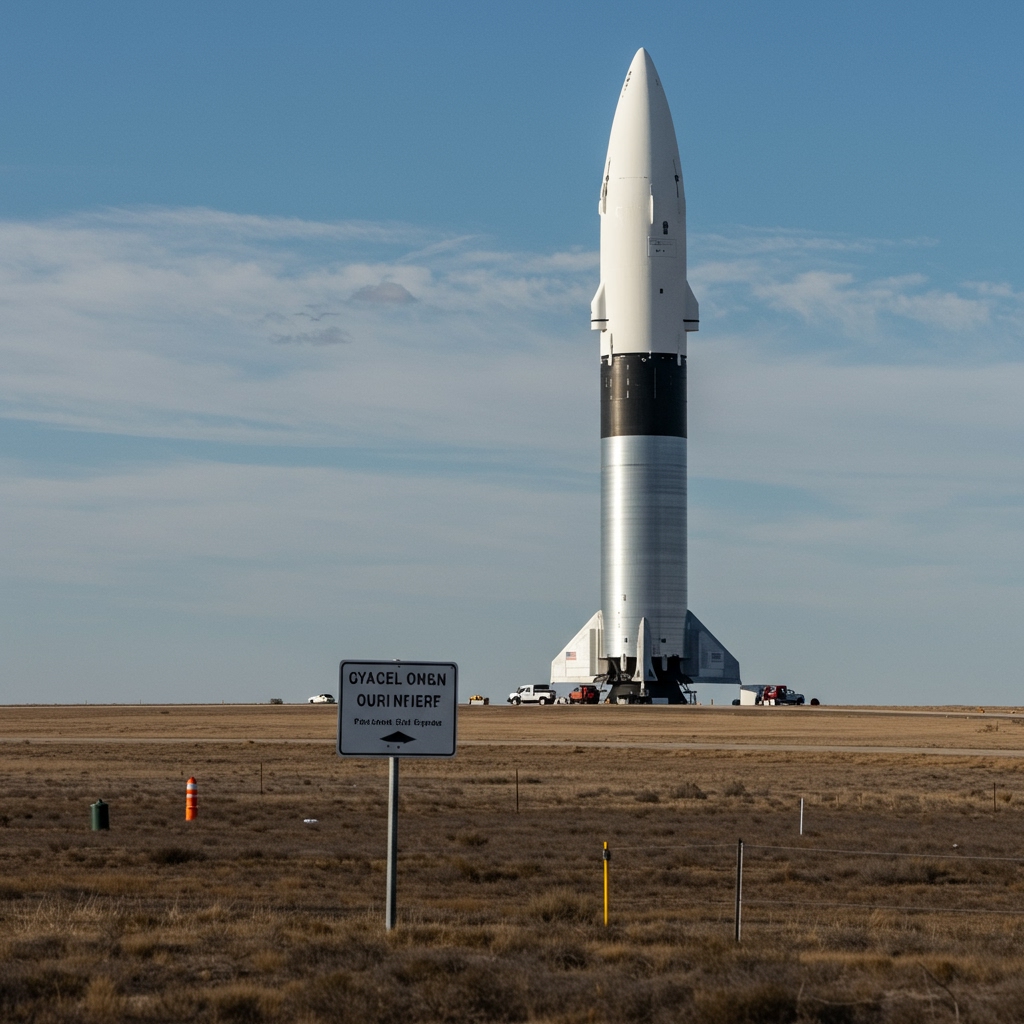SpaceX Prepares for Fourth Starship Integrated Flight Test (IFT-4)
SpaceX is actively preparing for the next significant leap in the development of its colossal Starship launch system, targeting a launch window opening in early March 2025. The highly anticipated fourth integrated flight test (IFT-4) is slated to lift off from the company’s dedicated Starbase facility located in Boca Chica, Texas. This upcoming mission follows the crucial data collection and lessons learned from the third integrated test flight, which occurred earlier this year.
Starship, a fully reusable, two-stage super heavy-lift launch vehicle, is central to SpaceX’s long-term ambitions, including human missions to the Moon under NASA’s Artemis program and, eventually, the ambitious goal of colonizing Mars. Each test flight represents a vital step in refining the complex hardware and operational procedures required for such endeavors. The rapid iteration approach employed by SpaceX means that insights gained from each flight are quickly incorporated into subsequent vehicle designs and test objectives.
Modifications Based on IFT-3 Insights
Following the IFT-3 mission, which provided valuable data on ascent performance, stage separation, and initial atmospheric reentry, SpaceX engineers have implemented significant modifications to both key components of the Starship system: the Super Heavy booster and the Starship upper stage vehicle. While the specific details of all modifications are proprietary, they typically involve enhancements to structural elements, propulsion systems (like the Raptor engines), thermal protection systems, and control mechanisms based on observed performance and anomalies during previous flights. These changes are intended to address identified areas for improvement and increase the probability of achieving the more ambitious objectives set for IFT-4.
The Super Heavy booster, equipped with numerous Raptor engines, is designed to provide the initial thrust to propel Starship out of Earth’s atmosphere. Its successful recovery is paramount to achieving full reusability and significantly reducing launch costs. The Starship upper stage, also powered by Raptor engines, is intended to perform orbital maneuvers, carry payloads or crew, and execute controlled atmospheric reentries for eventual landing or recovery.
Key Objectives for the IFT-4 Mission
The IFT-4 mission carries a set of challenging and critical objectives aimed at demonstrating capabilities essential for future operational missions. A primary goal for the Starship upper stage is to successfully perform an orbital burn. This maneuver, involving the reignition of its engines in space, is necessary for tasks like orbital insertion, transfer orbits for interplanetary travel, or deorbit burns.
Equally important is the demonstration of a controlled reentry for the Starship upper stage. This requires managing the intense heat generated by atmospheric friction using the vehicle’s heat shield and utilizing aero surfaces (flaps) for aerodynamic control during descent. A successful controlled reentry is a prerequisite for precise landings, whether on Earth or other celestial bodies with atmospheres.
For the Super Heavy booster, the main objective post-stage separation is to execute a controlled, soft splashdown maneuver in the Gulf of Mexico. Unlike planned future operations where the booster is intended to return to land and be caught by the launch tower’s ‘chopsticks’, early test flights focus on controlled descent and impact in a designated safe zone. A ‘soft’ splashdown, ideally achieved through engine relight just before impact, would demonstrate key controlled descent capabilities and provide further data on the booster’s performance during atmospheric return.
Advancing Towards Operational Readiness
Achieving these objectives in IFT-4 is crucial for advancing Starship’s development towards operational readiness. The ability to perform orbital burns and controlled reentries unlocks a wide range of mission profiles, from deploying satellites to serving as a lunar lander. SpaceX holds a significant contract with NASA to develop a Human Landing System (HLS) variant of Starship for the Artemis program, tasked with returning astronauts to the lunar surface. Successful execution of the maneuvers planned for IFT-4 is directly applicable to the requirements for lunar missions, including trans-lunar injection burns and controlled descent.
Furthermore, these test flights pave the way for SpaceX’s audacious long-term vision: enabling sustained human presence on Mars. The scale and capabilities of Starship are designed specifically to transport large quantities of cargo, infrastructure, and people across the vast distance to the Red Planet. Each test, including IFT-4, refines the system’s reliability and performance needed for such challenging interplanetary journeys.
The early March 2025 launch window target is contingent on various factors, including the successful completion of pre-flight checks, vehicle integration, and crucially, receiving the necessary regulatory approvals from agencies like the Federal Aviation Administration (FAA), which oversees commercial space launches in the United States. The FAA conducts environmental reviews and ensures public safety regulations are met before issuing launch licenses.
The global space community and potential customers are closely watching the progress of the Starship program. A successful IFT-4 would mark a major milestone, validating key design elements and operational procedures, and moving Starship closer to becoming a fully operational launch system capable of fulfilling its diverse and ambitious mission portfolio, from Earth orbit deliveries to landing humans on the Moon and eventually, Mars.
All eyes will be on the Starbase facility in Boca Chica, Texas, as SpaceX aims to open this critical launch window in early March 2025 for the fourth integrated flight test of its revolutionary Starship vehicle.





